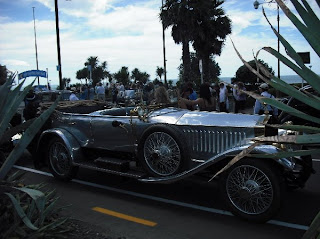
I have already reported making my Quince Cheese. I served it with my cheese-board, well a selection of three cheeses, when I had friends to lunch last week. I found it sweet and with little taste. An ornamental flourish to a meal I feel.
Then I decided to make some scones - what people in the South of England pronounce as "Scones" and in the North "Scons". Although brought up in the South regarding anything north of the Thames as nearly arctic I still use the northern pronunciation. My grandmother was Scottish and the pronunciation came to me by way of my mother.
There have been stirring events in Broadmayne. The main road through the village is shut for a week for laying drains giving a welcome respite from the heavy trucks of which more and more pass along Main Street at the expense of those wishing to travel eastwards from the village.
What is more the Black Dog public house has been closed for ten days. The tenant - the pub is owned by a chain who rent it to a tenant on condtition that he buys only their beer - having been there only some six monnths gave up. This was not surprising. He did not have the personality to make people feel welcome and had no wife to provide a joint effort. Catering including running a pub is a branch of entertainment. Food and drink are secondary to the experience. I am not sure though how well MacDonalds fit into this but Starbucks certainly understand it.
The premises are however being refurbished and there is to be a grand re-opening on Friday. The new tenant I am told is a local electrician with a wife, and also four children. Whether he has had experience or the training which is offered to prospective tenants I do not know. Running a pub is hard work with late nights, trouble with staff and in running the restaurant side where I suspect any money is made. The Black Dog is eminentlly respectable with a local clientele. That is its problem. Such people do not spend as much as drunken young people and the customers expect glasses rather than drinking expensive imported beers from the bottle. They do get glasses with Vodka though I believe. My knowledge of such places is based on the reports in the local paper of Court cases.
We shall see what happens to the Black Dog. I hope they put back the hanging sign which has disappeared in recent years. I have made some intersting acquaintances on my occasional visits. There is little or no overlap with the church-going community except in the restaurant which is modestly priced.
Another inititative of mine has been the installation of a water meter. This is optional and I reckon that water at £2 per cubic metre, or 0.2 pence per litre (is that right?) will save me money as a one person household even with all the usual appliances including a power shower.
So there are some of the details of village life. And I cut the grass this afternoon - perhaps the last opportunity of a dry sunny daybefore winter sets in.
Another picture to end. I walked the other afternoon by Hardy's Cottage where Thomas Hardy the novelist was born. The cottage is now preserved by the National Trust. Here is a picture on a fine autumn day:

As the cartoons used to say, "That's all, Folks."









































